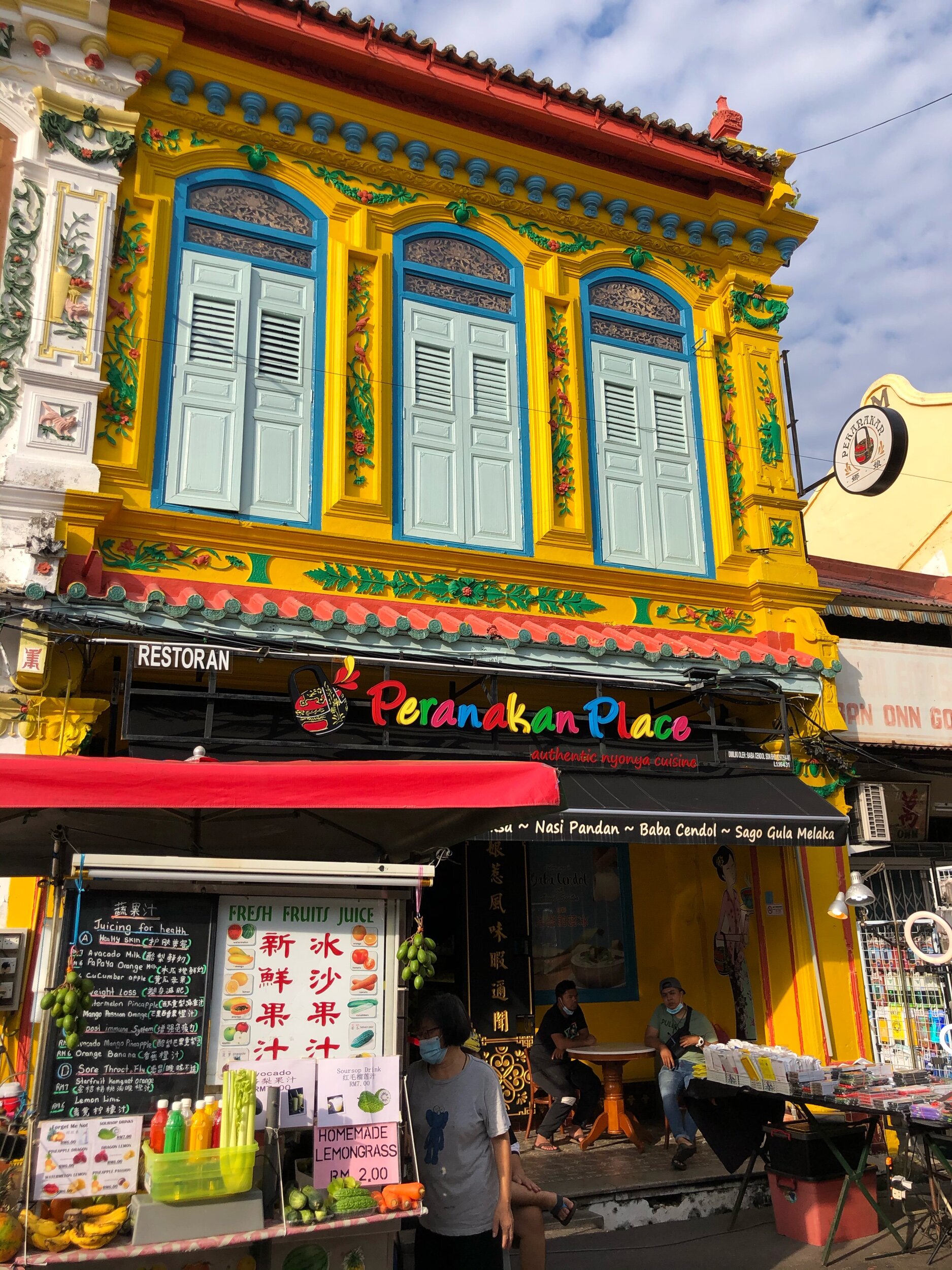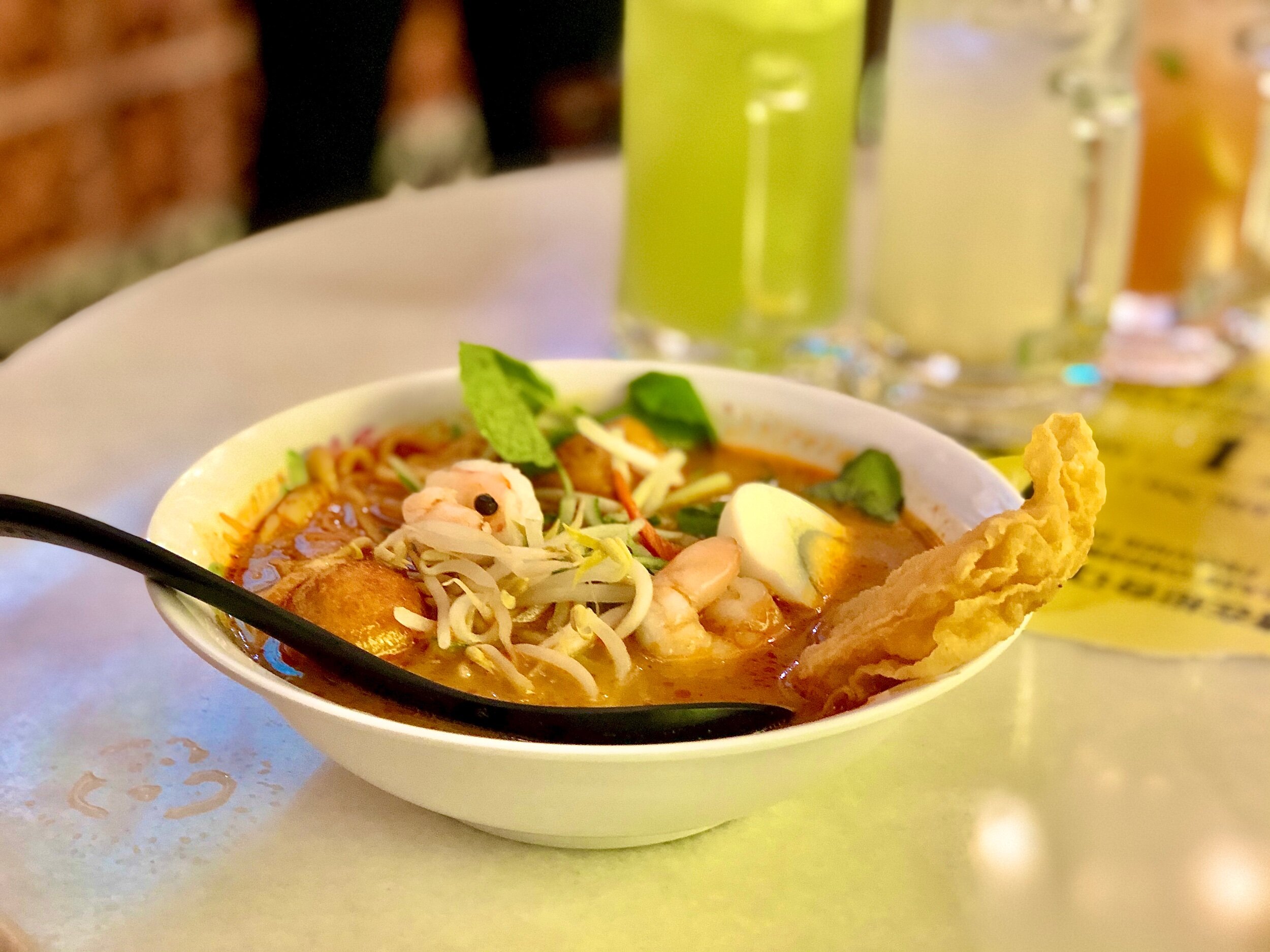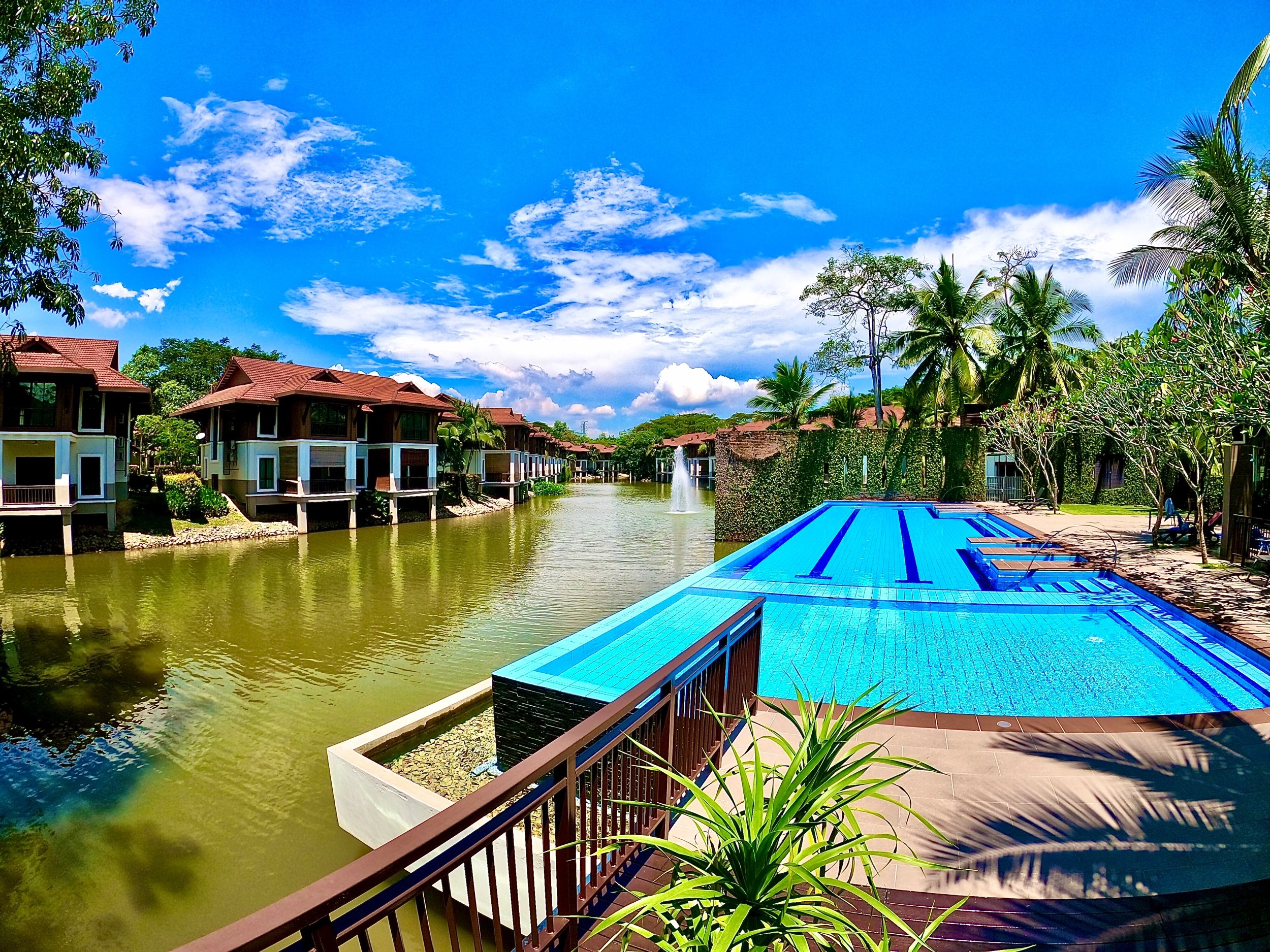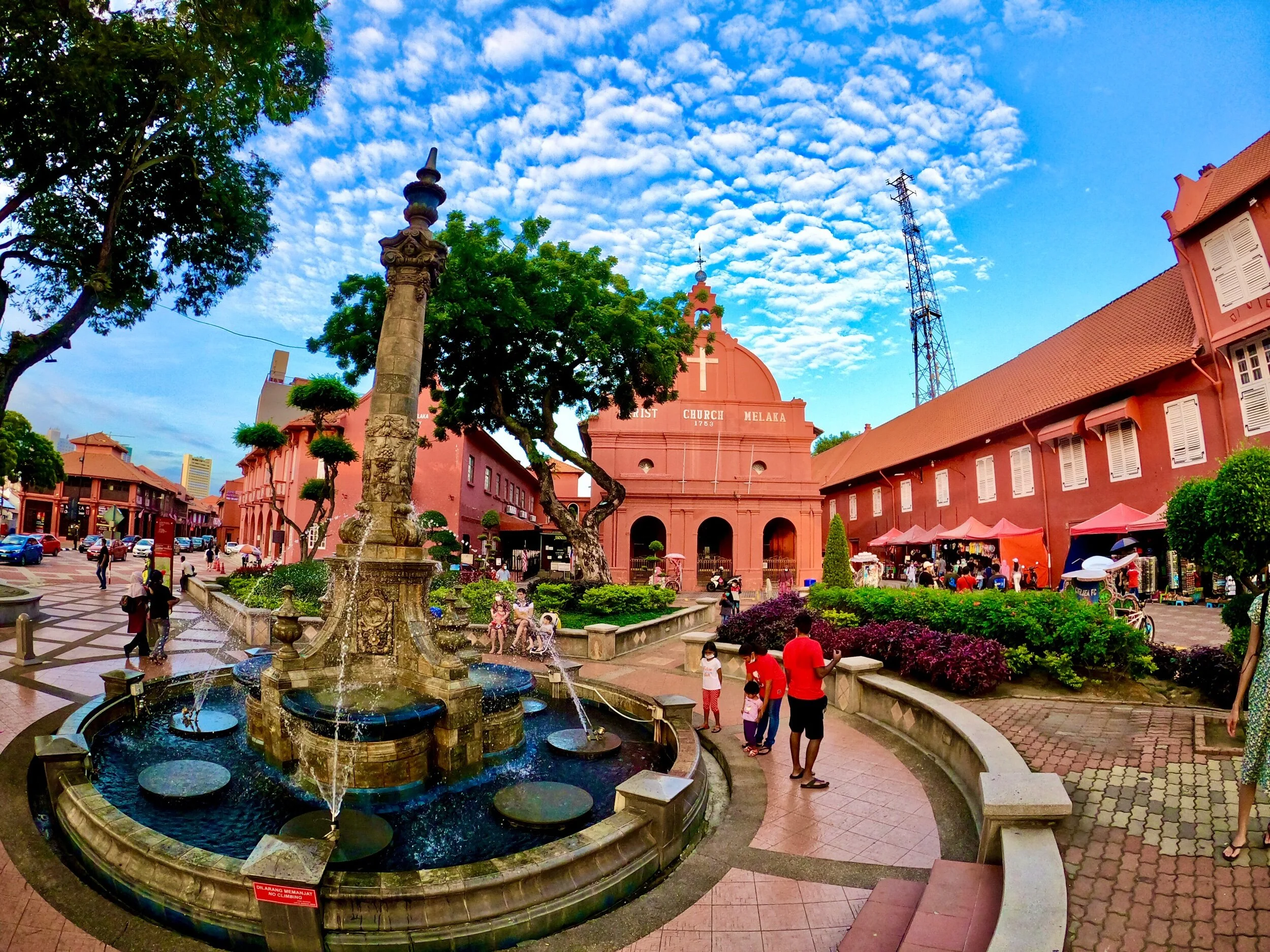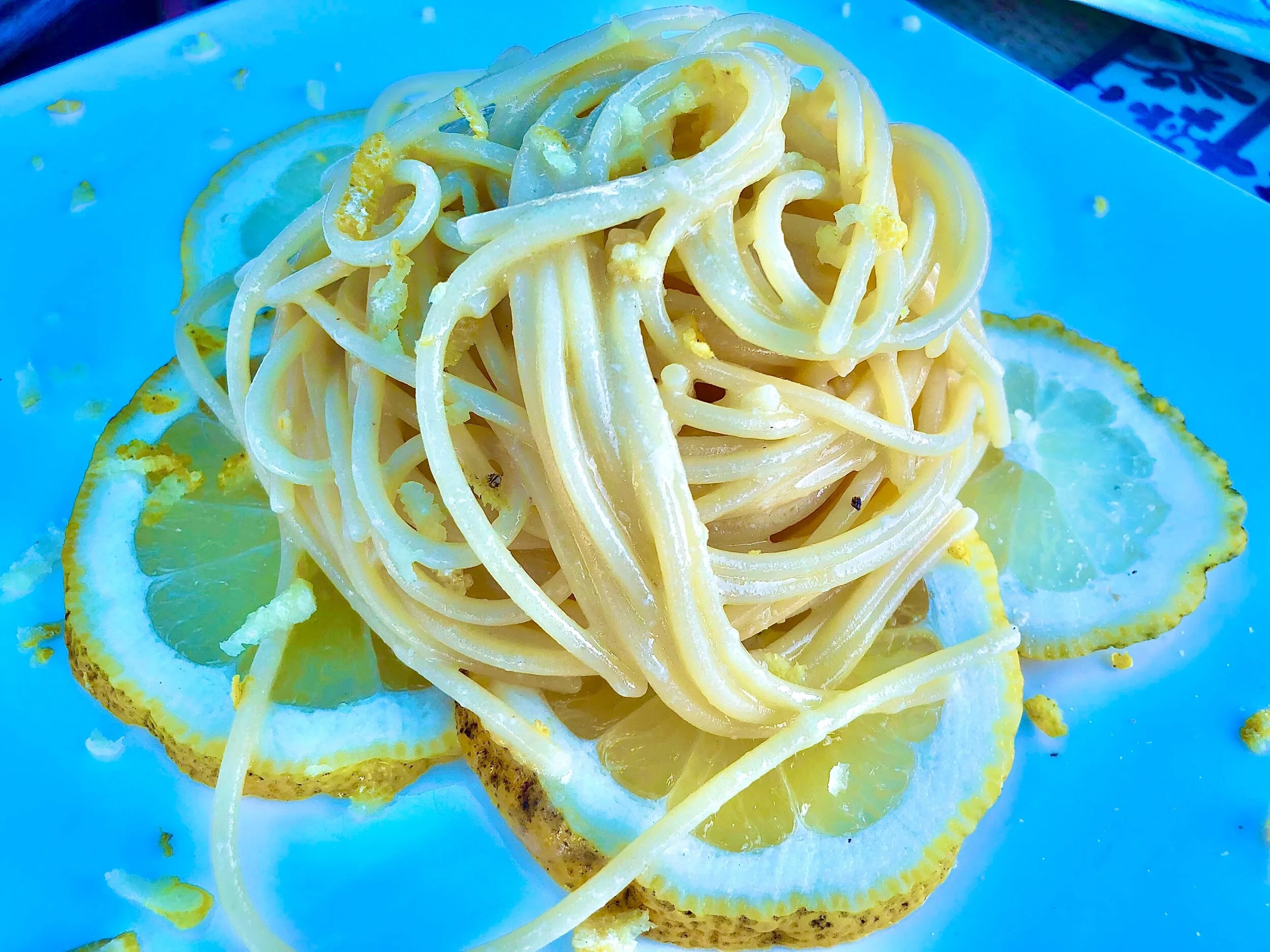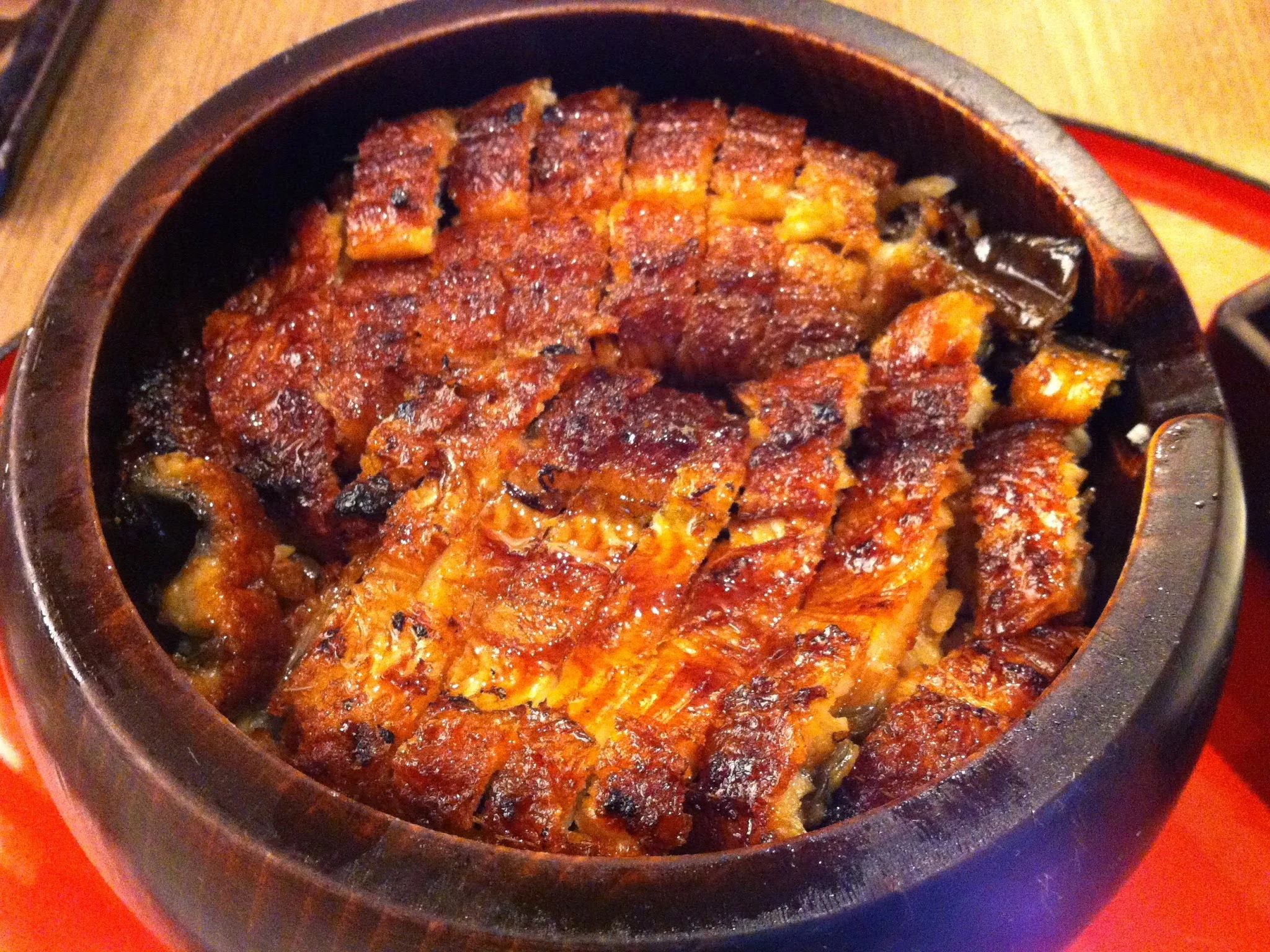Delicious Southeast Asian Recipes - Malaysia and Singapore
Please note: This post may contain affiliate links. See our disclosure to learn more.
Destinations > Asia > Malaysia > Delicious Southeast Asian Recipes
MORE OF MALAYSIA: Kuala Lumpur, Penang, The Habitat, Historical Malacca, The Lost World of Ipoh,
Cameron Highlands, Johor Bahru, Delicious Straits Recipes, and Johor Bahru to Singapore, and Singapore
Peranakan, Nyonya, and Hainanese Favorites
Almost nobody comes to Malaysia or Singapore without discovering some new delicious food - and if they don’t, we think they likely didn’t try much at all. The flavor profile for foods is quite different from what we’ve been familiar with, some that are quite exotic while others a magical blend of well-paired flavors. We liked a few of them so much that we thought it was important to share them as well. And yes, as it turns out, even some famous Peranakan Chefs have been able to make these dishes Vegan as well!
Our focus is on our favorite dishes while traveling across Malaysia and Singapore. The recipes included here can be altered to be Vegan-Friendly - or you can cook them the traditional way:
Singapore Chili Crab
Nyonya Laksa
Hainanese Chicken Rice
Nyonya Gula Melaka Cendol (a dessert)
Find recipes for our 4 favorites in the article below.
However, any respectable list of the most iconic foods from Malaysia & Singapore would also have to include these favorites as well:
Kueh Salat (a dessert)
Nasi Lamak
Hokkien Mee
Ayam Buah Keluak
Babi Pongteh
Nonya Chap Chye
So, if you are looking for these 6 recipes, please find links to them near the bottom of this article.
Singapore Chili Crab
Chili Crab is Singapore’s most iconic dish!
This is a sweet and savory dish. It is also very hands on and quite messy - as it also requires cracking open the shells while eating. Spicy! (Using a Vegan substitute is much less messy)
Serves 2-3
Ingredients:
2 Mud Crabs (or a Vegan substitute)
6 Shallots
2 Candlenuts (a.k.a. “Kukui nut” - may replace with Macadamia Nuts)
8 Garlic Cloves
4 Galangal Slices (may replace with young, fresh ginger root)
5 Red Chilis
3 Birds Eye Chilis (omit for less spicy Chili Crab)
2 Tbsp of Belacan (Shrimp Paste) Powder (or Vegetarian Belacan Powder)
1 Lime
Cooking Oil
1 tsp Fermented Bean Paste
6 Tbsp Ketchup
Salt & Sugar
1 ½ tsp Corn Starch with 1 ½ Tbsp Cold Water (mixed together)
1 Cup Hot Water
2 Beaten Eggs (or Vegan Egg Replacer)
Directions:
Wash Crabs very well. Remove top shells, gills, and soft insides.
Chop Crabs into halves, down the body (equal halves). Then chop each halve into 2-3 pieces between the legs. You should have 4-6 pieces when done.
Blend the Shallots, Candlenuts, Garlic Cloves, Red Chilies, Galangal Slices, Chili Padi, and Belacan Powder. Squeeze Lime Juice from Lime into the resulting paste.
Heat some oil in a wok (like this Chinese Wok - or a large pot) on high heat. Fry the paste. Add Fermented Bean Paste and Ketchup. Season with a pinch or two of Salt and/or Sugar.
Add Mud Crabs to the wok. Stir fry with paste. Add Hot Water, cover, and simmer for 10 minutes. Once crab shells turn bright red, pour in Beaten Eggs, and Corn Starch Mixture. Wait a moment for the egg to cook, then stir for 30-60 seconds. Serve hot.
Nyonya Laksa
Nyonya Laksa was the star winner for taste when we had it at Peranakan Place in Malacca, Malaysia. It is a spicy vermicelli noodle-soup, but the thick coconut milk balances it out and gives it an easy finish. There are so many flavors that mix well together in this dish that it’s simply hard to describe. So delicious that you may end up asking for seconds!
Serves 4-8
Ingredients:
2 Small Peeled Turmeric
25 Dried Red Chilis
6 Candlenuts (a.k.a. “Kukui nut” - may replace with Macadamia Nuts)
8 Shallots
6 Lemongrass Stalks
2 Tbsp Toasted Belacan (or Vegetarian Belacan Powder)
10 Galangal Slices (may replace with young, fresh ginger root)
60g Dried Shrimp (or Vegan Dried Shrimp)
1 L Thick Coconut Milk
Salt & Sugar
1 Kg Rice Vermicelli
700g Bean Sprouts
16 Large Shrimp (or Vegan alternative)
16 Dried Tofu Slices
4 Sliced Fishcakes (try replacing with these Vegan Fish Fillets)
4 Stalks Laksa Leaves (½ Stalk per bowl as garnish)
Optional: 4 Hardboiled Eggs (½ Egg per bowl as garnish)
Directions:
Soak the Dried Red Chilis until soft. Slice the tender white part of Lemongrass Stalks so that they become small circles. Soak the Dried Shrimp in water until soft, then remove the Shrimp and keep the water for later use (this is now the “Shrimp Water”). Separately, cook and deshell the Large Shrimp.
Blend the Turmeric, Red Chilis, Candlenuts, Shallots, Lemongrass Slices, Toasted Belacan, Galangal Slices into a paste. Heat wok (like this Chinese Wok - or a large pot) with Oil. Fry paste for 5 minutes. Remove and let cool (this is now the “Laksa Paste”).
Chop the soaked Dried Shrimp coarsely and fry in the oiled wok. Once cooked, add in the Laksa Paste created in step 2. Fry together for 5 minutes. Add the Shrimp Water created in step 1 as well as the Coconut Milk. Season with a pinch or two of Salt and/or Sugar. Keep warm on very low heat (this is now the “Laksa Broth”).
Boil the Rice Vermicelli in one pot. Boil the Beansprouts in a second pot. Boil (or Fry - your preference!) the Large Shrimp. Fry the Dried Tofu.
Prepare 8 soup bowls with equal amounts of Vermicelli, Shrimp, Beansprouts, Dried Tofu, and Fishcake Slices. Fill with warm Laksa Broth. Garnish with half of a hardboiled egg. Add one stalk of Laksa Leaves and serve.
Hainanese Chicken Rice & Chicken Rice Balls
Chicken and Rice is a staple meal in Malaysia, Singapore, and China. You will see it everywhere when visiting these countries. In Malaysia, one of the biggest fast casual restaurants is “The Chicken Rice Shop.” One of the tastier chicken and rice meals is the Hainanese Chicken Rice - one of the most beloved national dishes in Malaysia and Singapore. This is a dish of fluffy chicken-flavored rice served with succulent steamed chicken.
Servings: 4
Pro Tip: We would also recommend trying Hainanese Chicken Rice Balls (as pictured above). These are a local favorite in Malacca, Malaysia. Serve them with the Roasted Hainanese Chicken instead of the fluffy rice.
Ingredients:
1 Whole Chicken (Cleaned and Dried) - (or use Vegan Roasted Chicken)
Course Salt
2 Spring Onions
12 Ginger Slices
1 Bowl Iced Water
2 Finely Chopped Garlic Cloves
1 Finely Chopped Shallot
2 Cups Jasmine Rice
1 Tbsp Soy Sauce
1 Tbsp Sesame Oil
1 Pandan Leaf (or 1 tsp of Pandan Leaf Powder)
1 Cucumber
Directions:
Rub the skin of the Chicken thoroughly with Course Salt to produce a smooth texture. Rinse and dry.
Stuff Chicken with the Spring Onions and half of the Ginger Slices.
Place Chicken in a Large Pot and cover with warm water. Bring to a gentle boil, then lower heat to a simmer.
Once cooked, remove the Chicken from the pot and submerge it into the bowl of Iced Water (makes the Chicken extra tender). Remove and allow to dry. Keep the broth in the pot for later (this becomes the “Chicken Broth”).
Add the remaining Ginger Slices, the Garlic, the Shallots and Oil to a wok (like this Chinese Wok - or a frying pan) and fry. Once cooked, lower heat.
Add the Rice to the wok and stir until well blended. Remove from heat. Add the Sesame Oil and Soy Sauce and stir into the mixture. Transfer everything from the wok into an Instant Pot Rice Cooker. Tie the Pandan Leaf into a knot and push into the mixture. Add about 4 cups of the Chicken Broth, then close the lid and cook. (If you are using the Vegan Chicken as a substitute, you’ll need some Vegan Chicken Broth here).
While the rice cooks, debone and Chop the Chicken into slices. Set aside. Slice the Cucumber down the middle (length wise) and then slice. Place around the sides of the plates.
Once the rice is cooked, fluff it and place on the center of the plate. Layer the Sliced Chicken over the side of the Rice and serve with Soy Sauce, Chili Sauce, Ginger Garlic Paste, and some Barley Water.
Nyonya Gula Melaka Cendol
Nyonya Gula Melaka Cendol is one of our favorite Malaysian desserts. The perfect paring of sweet Kidney Beans, Pandan flavor, Coconut milk, and Palm Sugar over shaved ice is something you just have to try at least once! Sometimes the locals also serve it with creamed corn and/or durian - although we prefer it the original way.
Serves 4
Ingredients:
6 Pandan Leaves (or 6 tsp of Pandan Leaf Powder)
15 g Rice Flour
5 g Tapioca Flour
5 g Mung Bean Flour
1 tsp Pandan Extract (optional for a heavier Pandan flavor)
1 Piping Bag
100 ml Coconut Milk (or 100 ml of Pandan Flavored Coconut Milk)
1 tsp Salt (plus one extra dash - ¼ tsp)
100 g Palm Sugar (“Gula Melaka”)
1 cup Water
1 can of Kidney Beans (approx. 16 oz)
6 cups of Shaved Ice (use a Shave Ice Machine for the best results)
Directions:
Finely blend 3 Pandan Leaves in a blender with ¾ cup of water. Strain the juice into a cup. This is your “Pandan Juice” (or 3 tsp of Pandan Leaf Powder). Mix the Pandan Juice, Rice Flour, Tapioca Flour, Mung Bean Flour, and Pandan Extract together into a batter. This is your “Pandan Batter.”
Prepare a large bowl of Ice Water and set aside. Prepare a piping bag with a hole that will produce a thickness about the size of a phone cord (thicker than spaghetti). Set near the Ice Water bowl.
Cook the Pandan Batter over a medium heat in a pan on the stove until it becomes a thick paste. Immediately transfer into the Piping Bag and squeeze out into the Ice Water bowl (under the surface of the Ice Water). We recommend pieces between 2-6 inches long. Allow them to sit in the bowl to firm up. These are your “Cendol Jellies.”
In one pot, boil the Coconut Milk, a dash of Salt (¼ tsp), and 2 Pandan Leaves (or 2 tsp of Pandan Leaf Powder). Once boiling, stir and remove from heat. This is your “Pandan Flavored Coconut Milk.”
In another pot, combine 1 cup of Water, Palm Sugar, 1 tsp Salt, and 1 Pandan Leaves (or 1 tsp of Pandan Leaf Powder). Cook on medium heat until sugar fully melts and has a watery-syrup consistency. Set aside to cool. This is your “Gula Melaka.”
Prepare 4 bowls with 1 cup of shaved ice in each bowl, then top with another ½ cup of shaved ice (on top of the other cup). On one side of the bowl, fill with ¼ can of the Kidney Beans. On the other side of the bowl, fill with ¼ of the Cendol Jellies. Drizzle ¼ of the Pandan Flavored Coconut Milk and ¼ of the Gula Melaka. Serve and enjoy immediately!
Other Amazing Nyonya, Peranakan, and Hainanese Favorites
Kueh, or Kuih, are bite-sized snack or dessert foods commonly found in Southeast Asia. Kueh Salat is a two-layer creamy pandan custard cake with a sweet glutinous rice base. The blue in the glutinous rice layer is from blue pea flowers, a typical Peranakan ingredient used for its pretty blue coloring.
The national dish of Malaysia consists of fragrant rice - cooked in coconut milk and pandan leaf - served with a hot spicy sauce (“sambal”), and various garnishes (such as fresh cucumber slices, small fried anchovies, roasted peanuts, and hard-boiled or fried egg). It is also usually served with fried chicken or a chili cuttlefish.
This dish has thick noodles covered in a dark fragrant sauce with black beans, cabbage, CRISPY TOFU and –you can’t skip this– homemade chili paste. It is certainly a spicy noodle dish.
This traditional Peranakan dish consists of chicken, tamarind gravy and Buah Keluak nuts and is traditionally served with rice, however it does take some time to prepare!
This is a Nyonya-Style Braised Pork in a Fermented Soy Bean Sauce.
A braised mixed-vegetable stew.
FAQ’s
What are the origins of Nyonya cuisine and how does it differ from traditional Malaysian and Singaporean dishes?
Nyonya cuisine, also known as Peranakan cuisine, is a fusion of Chinese ingredients with spices and cooking techniques of the Malay and Indonesian community. It originated from the early Chinese migrants who settled in the Straits Settlements of Penang, Malacca, and Singapore and married locals. This blend created a unique cuisine that is tangier, more aromatic, and more herbal than traditional Malaysian and Singaporean dishes, which are generally more savory and spicy.
How can one identify authentic Nyonya dishes when dining out?
Authentic Nyonya dishes are characterized by their intricate preparation and distinctive flavors, which often involve a balance of sweet, sour, and spicy. Key ingredients include coconut milk, galangal, lemongrass, kaffir lime leaves, and tamarind. Dishes such as Laksa, Ayam Buah Keluak, and Babi Pongteh are hallmarks of Nyonya cuisine. When dining out, look for these dishes and inquire about the use of traditional ingredients and methods.
Are there any cultural significances tied to certain Nyonya dishes?
Yes, many Nyonya dishes carry cultural significance, often related to festivals and celebrations. For example, Kueh Salat is a two-layered steamed cake traditionally served during the Lunar New Year and other festive occasions. It symbolizes prosperity and is made with glutinous rice and pandan-flavored custard. Another example is Nasi Ulam, a herbed rice salad, which is a common dish during the Peranakan festival of Chap Goh Meh, symbolizing health and longevity.
(1) Delicious Southeast Asian Recipes - Malaysia and Singapore. https://eatwanderexplore.com/blog/delicious-straits-recipes-hainanese-peranakan-nyonya-malaysia-singapore.
(2) Historical Malacca: Delicious Food, Culture, and Colonial Influence .... https://eatwanderexplore.com/blog/historical-malacca-delicious-food-culture-and-colonial-influence-malaysia.
(3) 7 Peranakan Recipes to Impress Your Grandma – The Meatmen. https://themeatmen.sg/articles/7-peranakan-recipes-to-impress-your-grandma/.
Thank you VERY much for reading our article. We actually created this website to help people reach financial independence. Did you know that by having a remote job and traveling endlessly, or living in a country that has low costs of living, you can actually reach retirement quicker? Plus, retirement abroad is up to 75 percent cheaper as well! Learn more by exploring our website: EatWanderExplore and REmotiFIRE.
See our Thank You page to sign up for our free weekly newsletter - you’ll receive only 1 email per week letting you know about our latest travel articles, remote-work life, and amazingly affordable destinations!
Found this post useful? Buy us a coffee to help support this site’s running costs OR share this article with a friend.
